This post may contain affiliate links. Please read our disclosure policy.
This mini pavlova is light and elegant with a crisp shell and soft, marshmallow-like center. Made with one egg white, it’s topped with whipped cream and fruit for a simple, classic treat in a smaller size.
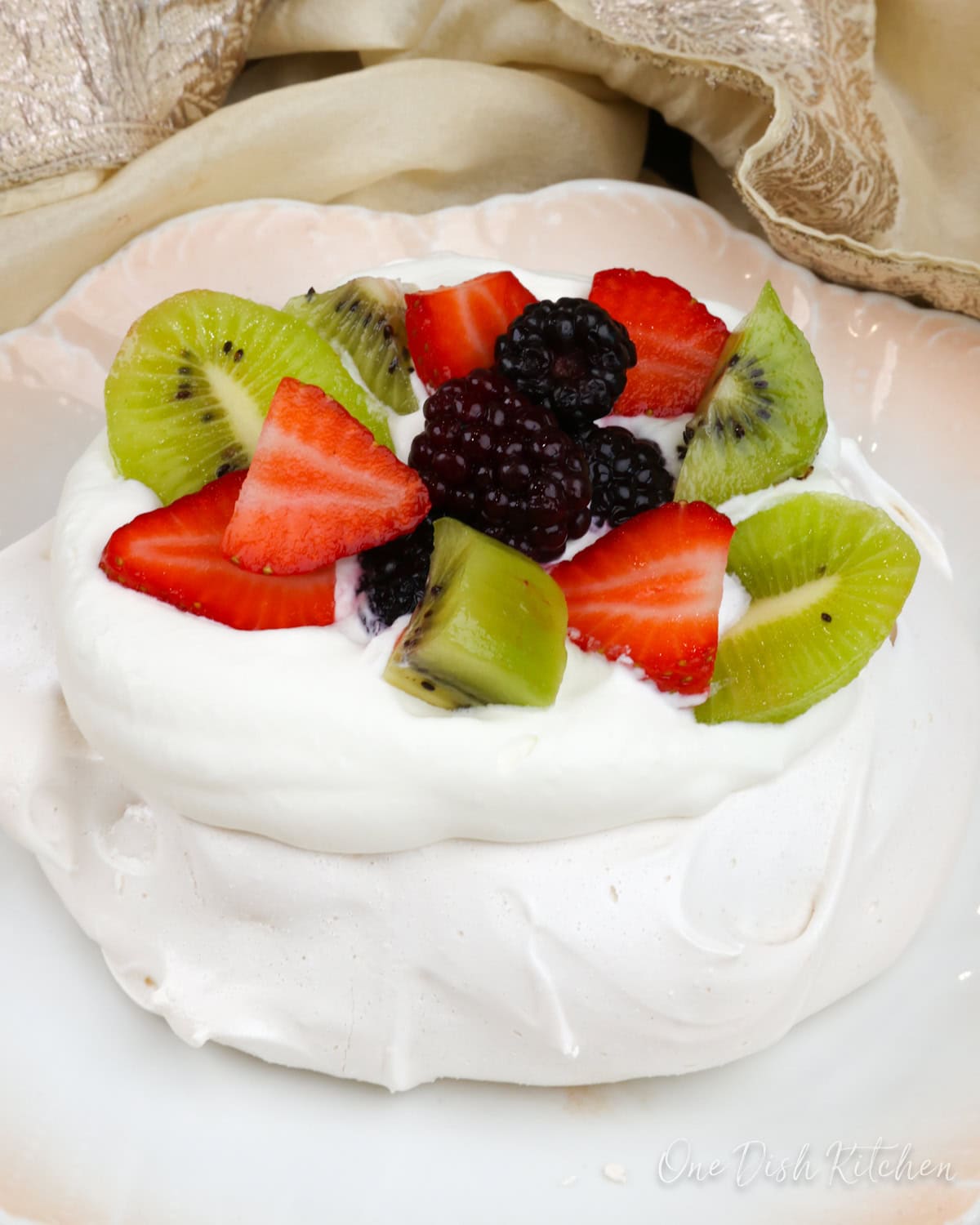
Featured Comment
“Made this today – topped with pluots. So Good…”
– Gail
Why You’ll Love This Recipe
- Made with Basic Ingredients: You only need a few simple ingredients like an egg white, sugar, and vanilla.
- Easy to Make: No special tools required.
- Toppings Your Way: Add whipped cream and your favorite fruit for a delicious and colorful dessert.
- Make More if Needed: Double the ingredients to make a larger pavlova or two smaller ones.
A pavlova is a light, airy dessert with a crisp shell and a soft, marshmallow-like center. Topped with whipped cream and fresh fruit, it’s simple yet elegant. Named after Russian ballerina Anna Pavlova, who toured Australia and New Zealand in the 1920s, this beloved dessert remains a favorite in both countries.
There’s something magical about it – crisp yet soft, delicate yet rich, and every bite feels like a little celebration. Whether you’re making it for a special occasion or just because, I hope you enjoy the simple beauty of this dessert as much as I do.
If you love elegant, single serving desserts, try these favorites: Small Fresh Fruit Tart, Mini Boston Cream Pie, Chocolate Lava Cake, Mini Flourless Fallen Chocolate Cake, and 10-Minute Tiramisu. Each one is easy to make and perfect for a little indulgence.

Ingredients
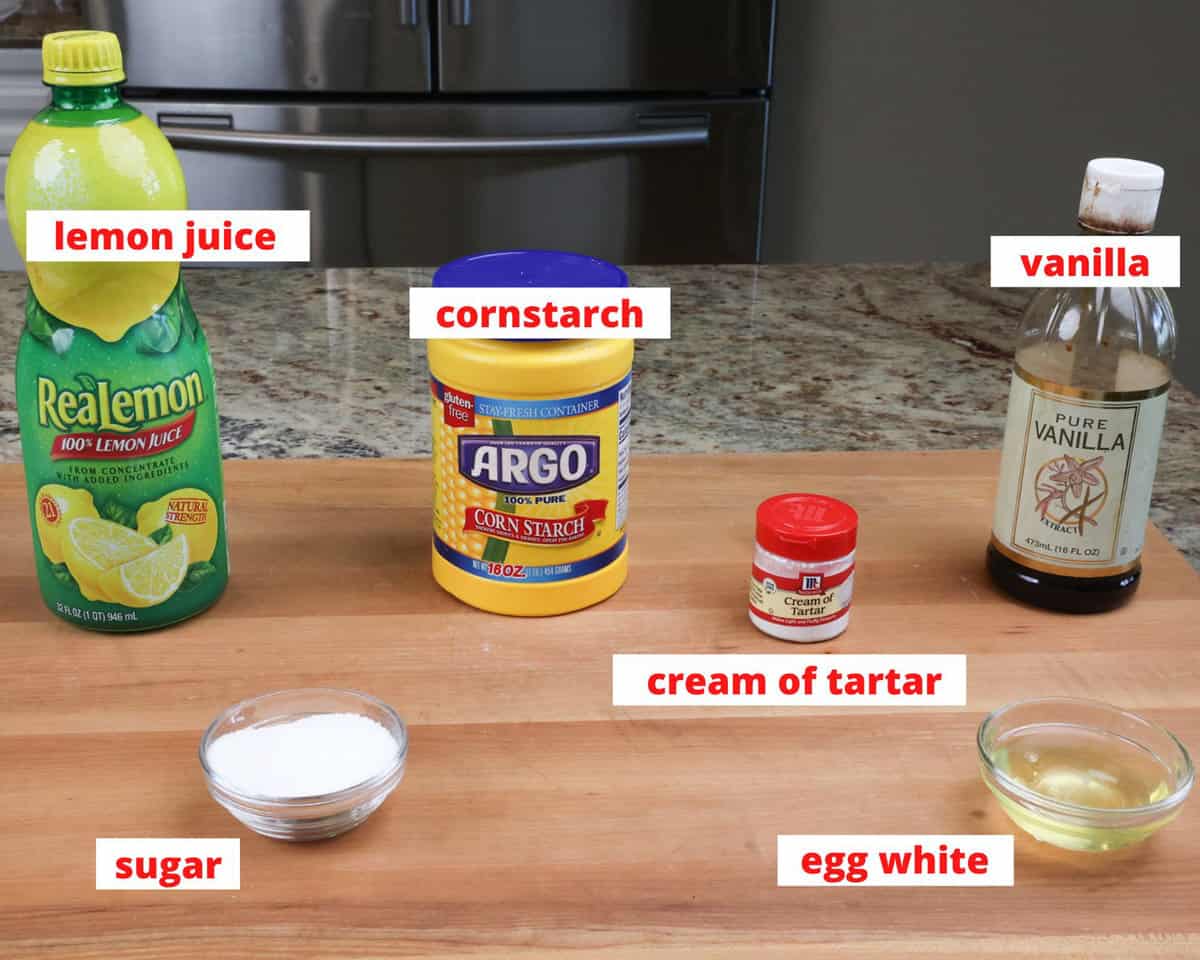
If you have any ingredients leftover from this single serve Pavlova recipe, check out our Leftover Ingredients Recipe Finder.
- Egg white: Use a large, room-temperature egg white for the best volume. Ensure no yolk or grease is in the mixing bowl, as it prevents stiff peaks from forming. Save the yolk for small batch thumbprint cookies, mini German chocolate cake, single serving custard, or my small batch cream scones recipe.
- Sugar: Granulated sugar is added gradually while whipping to help it dissolve and create a smooth, glossy meringue.
- Cornstarch: Helps stabilize the meringue and gives the pavlova its soft, marshmallow-like center.
- Cream of tartar: Stabilizes the egg white, helping it hold its shape and volume.
- Vanilla: Enhances flavor. You can use the seeds from a vanilla bean or substitute with almond extract for a different taste.
- Lemon juice: Fresh or bottled lemon juice helps stabilize the egg white and maintain its volume.
- Whipped cream ingredients: Heavy cream, sugar, and vanilla extract. Homemade whipped cream has the best taste and texture, but store-bought works too.
How To Make A Pavlova
These photos and instructions are here to help you visualize how to make a small pavlova. See the recipe box below for ingredient amounts and full recipe instructions.
- Preheat the oven to 225°F (107°C).
- Beat the egg white with an electric hand mixer on high until foamy, about 20 seconds.
Pro Tip: Make sure no egg yolk gets into the egg white. Even a tiny bit of yolk can prevent the egg white from whipping up properly.
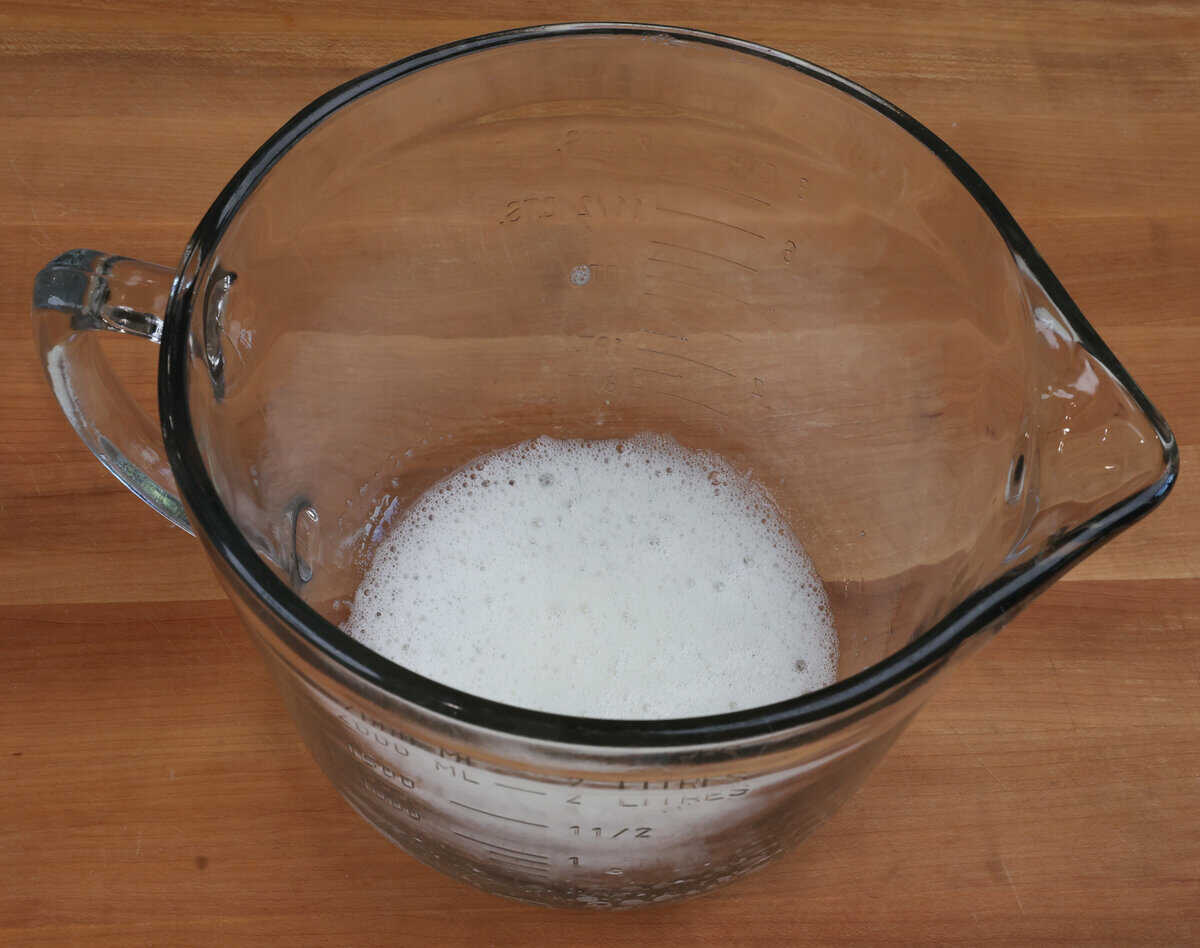
- Mix the sugar, cornstarch, and cream of tartar in a small bowl.
- Gradually add the sugar mixture to the egg white while beating on medium speed. Increase to high and beat until stiff peaks form and the meringue is thick and glossy, about 10 minutes.
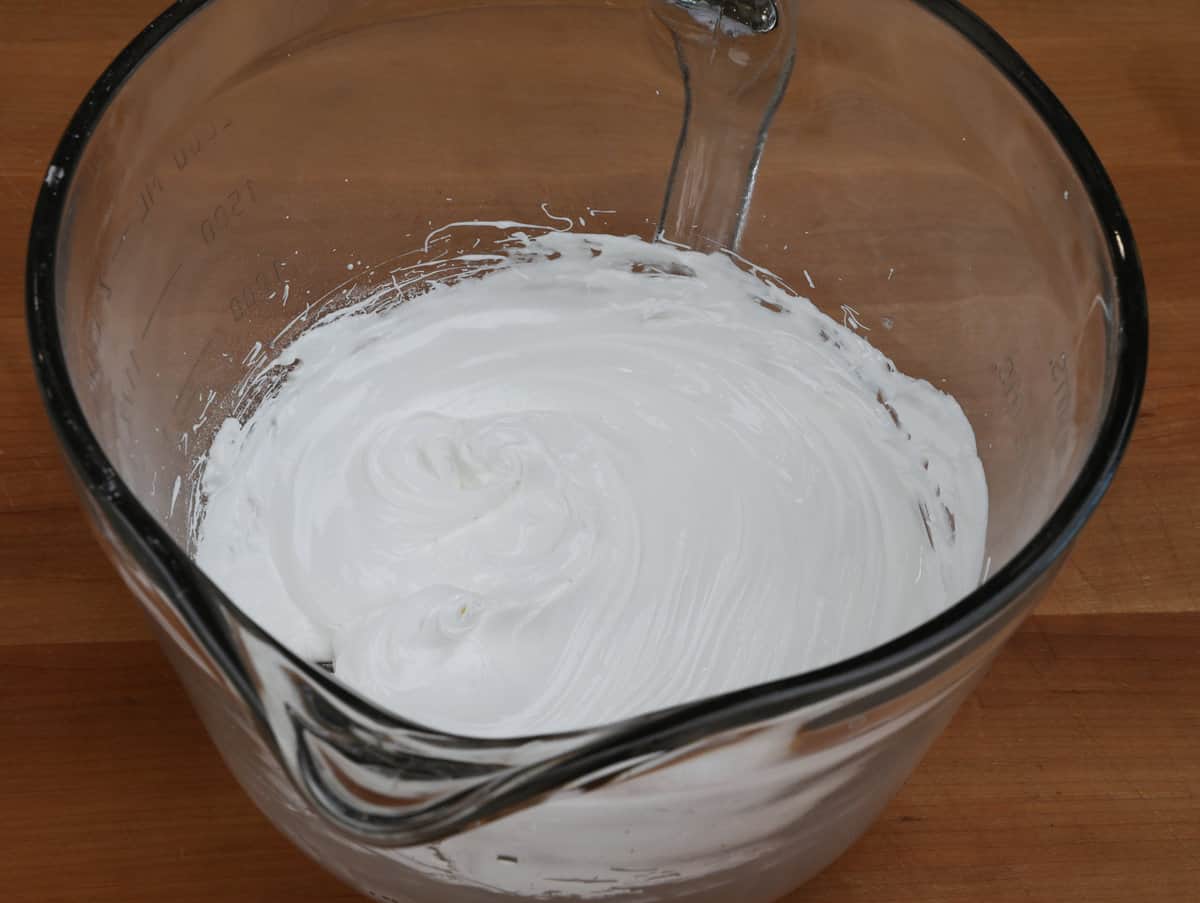
- Briefly mix in the vanilla and lemon juice for 10 seconds.
- Shape the meringue on a parchment-lined baking sheet, creating a slight indent in the center for the whipped cream. Smooth the edges or leave them rustic.
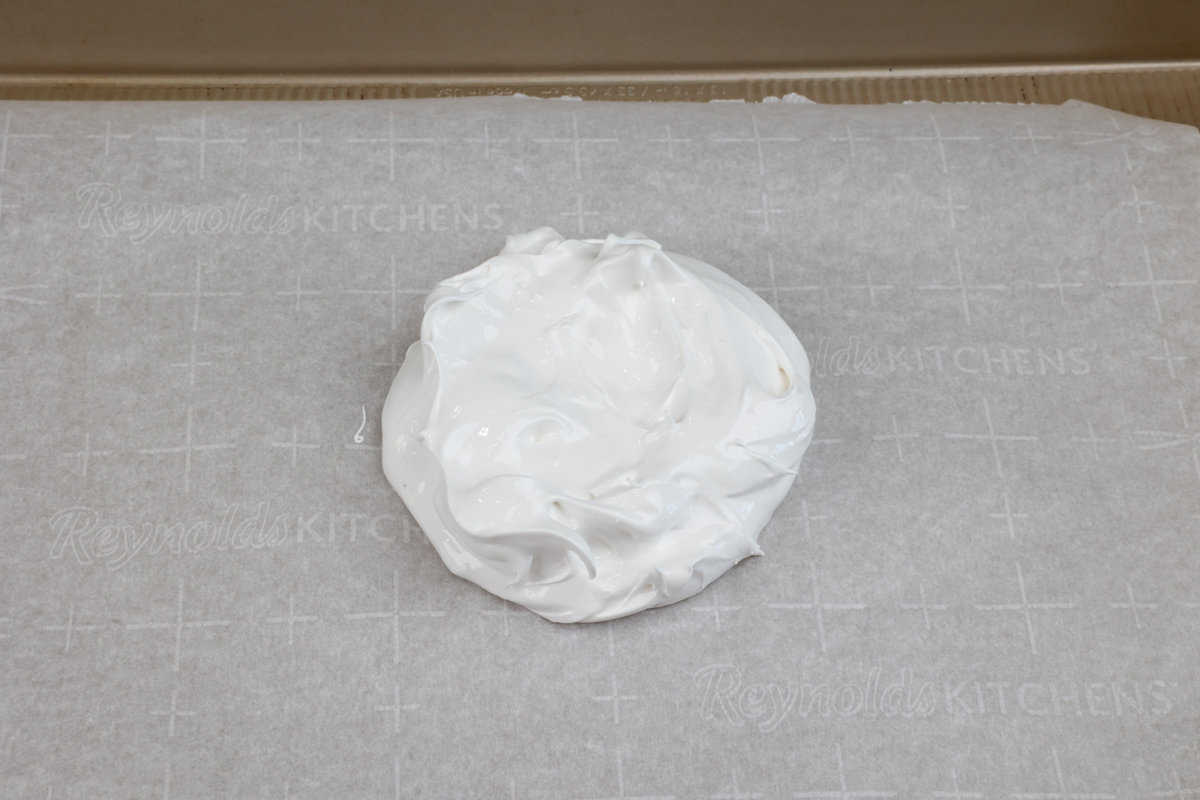
- Bake for 1 hour, then turn off the oven and let it cool inside for another hour without opening the door.
Pro Tip: Once cooled, store covered at room temperature for up to 2 days or serve immediately.
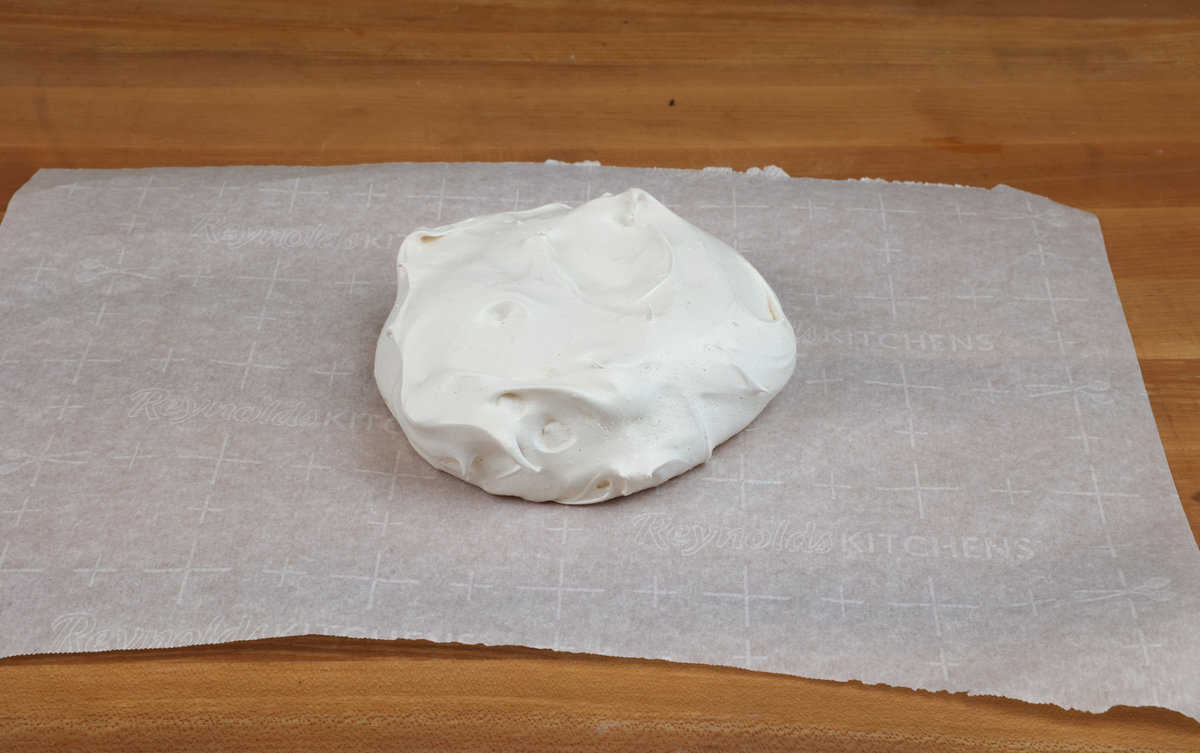
- Make the whipped cream by beating the heavy cream, sugar, and vanilla on medium speed until soft peaks form.
Pro Tip: The cream should thicken, leaving trails. Soft peaks curl down slightly and melt back into the cream.
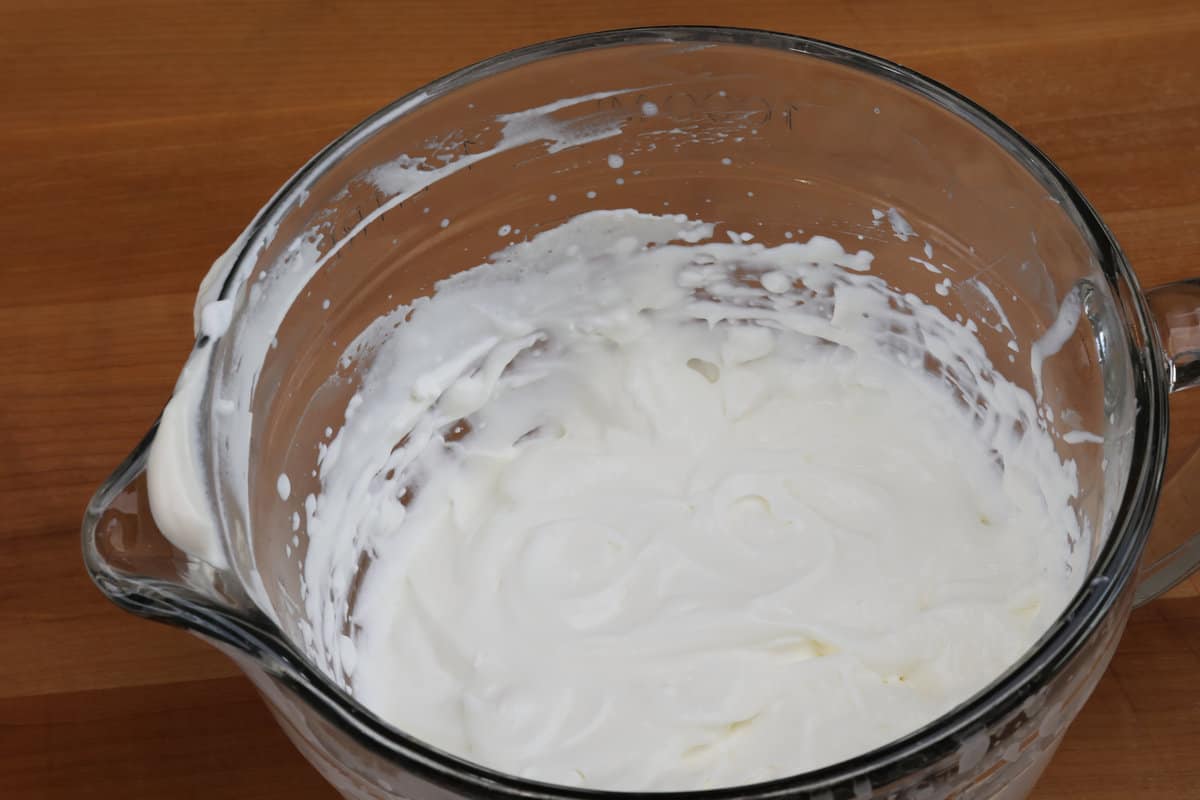
- Spoon the whipped cream over the pavlova.

- Top with fresh fruit or berries and serve.
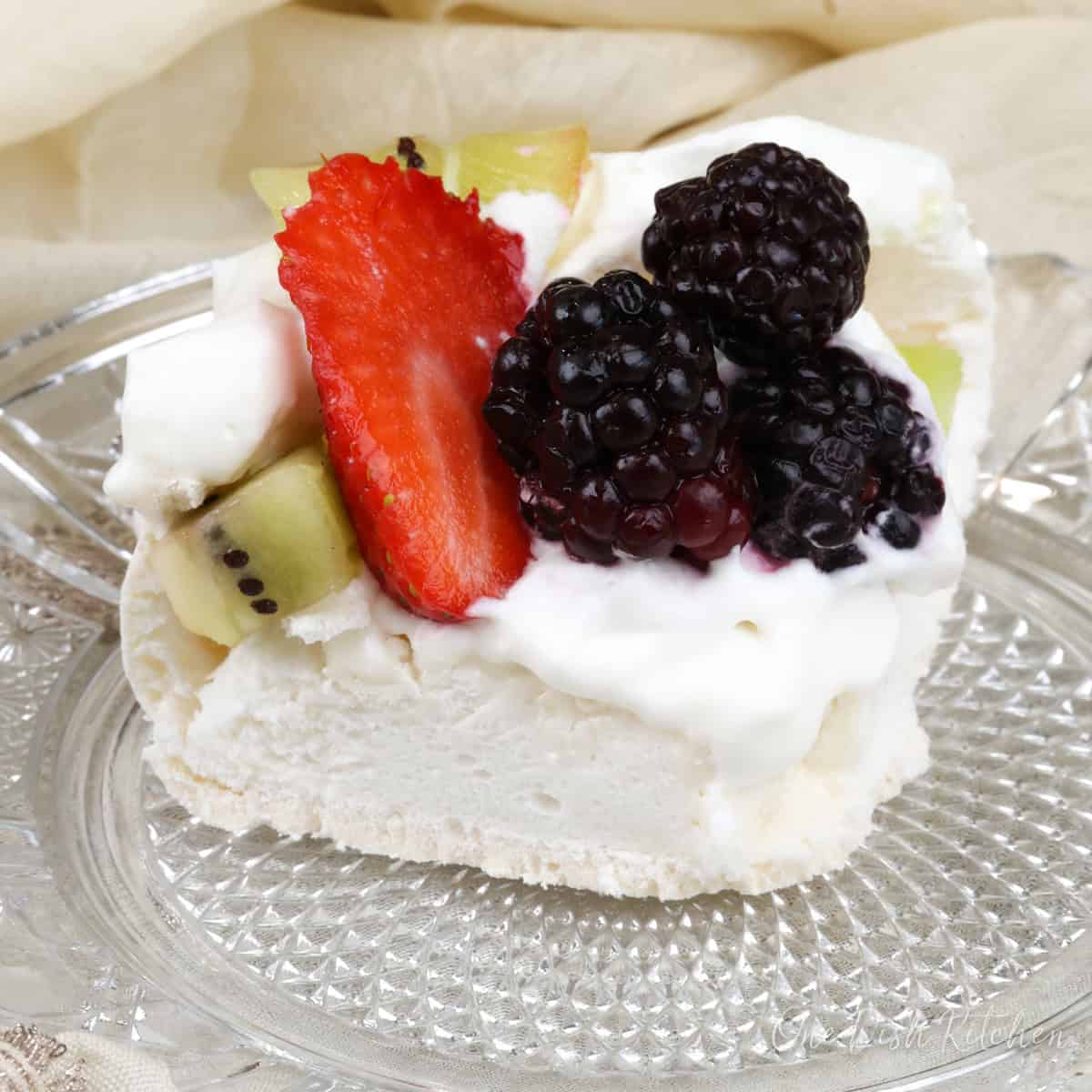
Expert Tips
- Check the weather. Pavlova is best made on a dry day with low humidity. Moisture in the air can cause it to collapse. Avoid boiling water or cooking steamy foods while making pavlova, as steam adds moisture to the air.
- Read the recipe first. This dessert comes together quickly, so review the full recipe and ingredient notes before starting. Have everything measured and ready.
- Use a room-temperature egg white. It whips faster and creates more volume than a cold one. Take the egg out of the fridge at least 20 minutes before making your pavlova.
- Keep equipment grease-free. Any trace of fat in the mixing bowl or on the beaters can prevent the egg whites from whipping properly.
- Make two small pavlovas. If you prefer, divide the meringue into two circles on the baking sheet instead of making one larger pavlova.
Topping Ideas For A Pavlova
Enhance your pavlova with these flavorful toppings that add color, texture, and freshness:
- Fresh Berries: Strawberries, blueberries, raspberries, or blackberries bring natural sweetness and vibrant color.
- Sliced Fruits: Kiwi, mango, peaches, or plums add a juicy, tropical touch.
- Raspberry Coulis: A tangy, smooth sauce that complements the pavlova’s sweetness. (See below for an easy recipe.)
- Lemon Curd: Adds a bright, citrusy contrast to the sweet meringue and whipped cream.
- Chocolate Shavings: A sprinkle of dark or milk chocolate adds a rich, decadent touch.
- Fresh Mint: A few leaves add a refreshing finish.
How to Make Raspberry Coulis
For a simple, flavorful drizzle:
- In a saucepan, combine 6 ounces fresh raspberries, 2 tablespoons sugar, and ½ teaspoon lemon juice. Cook over medium-low heat, stirring until the sugar dissolves, about 5 minutes.
- Remove from heat and puree in a blender.
- Strain through a fine mesh sieve into a bowl, pressing to remove seeds. Discard the seeds.
- Chill before drizzling over your pavlova.
This coulis pairs well with other desserts like single serve vanilla ice cream, yogurt, or my small chocolate cake recipe. Store in the fridge for up to a week.
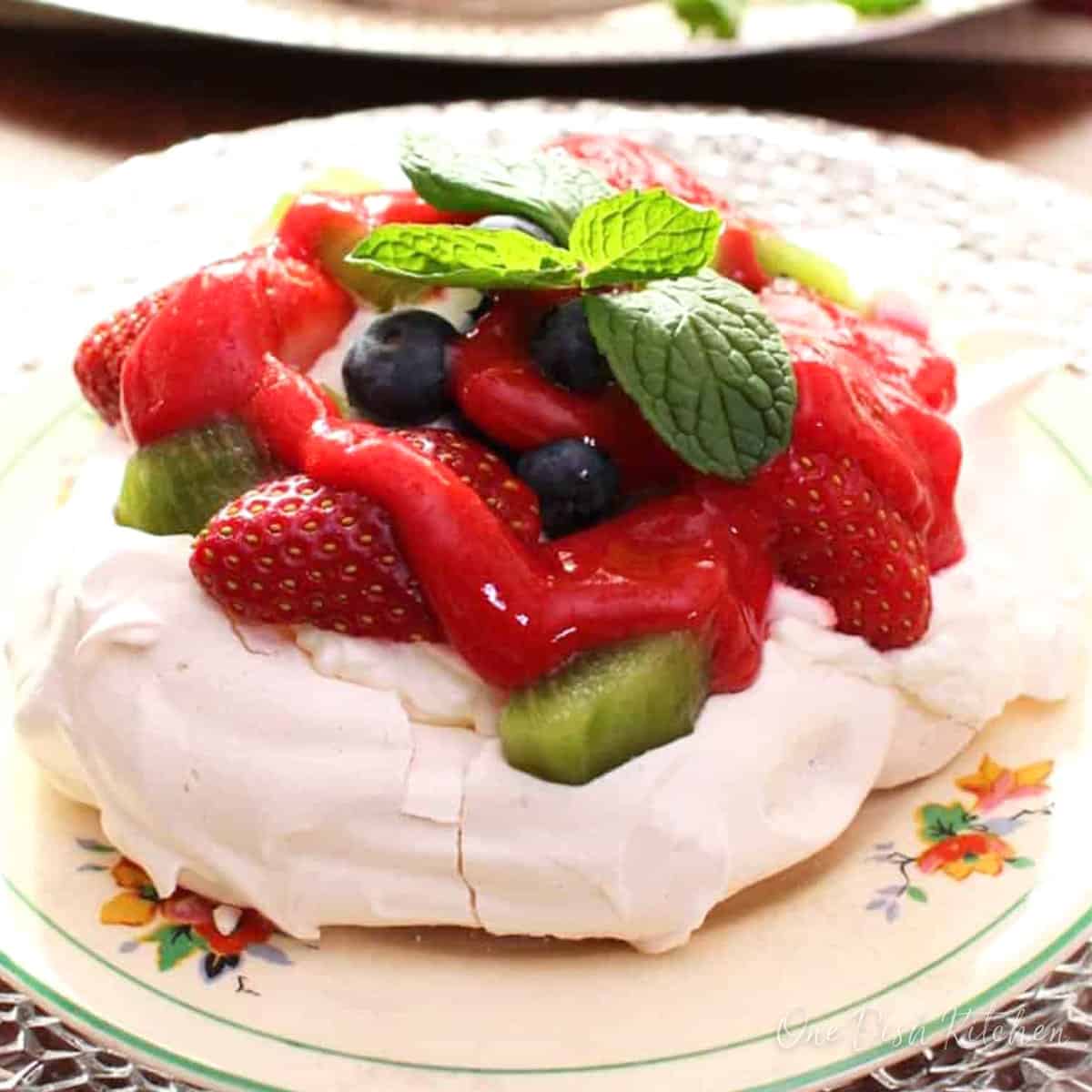
RELATED: Egg White Recipes
Frequently Asked Questions
Yes! Once cooled, store the pavlova in an airtight container at room temperature for up to 2 days. Add toppings just before serving.
Cracking can happen if the oven cools too quickly. Always let the pavlova cool completely inside the oven with the door closed. But don’t worry—cracks won’t affect the taste, and the whipped cream will cover them anyway!
This usually happens in humid conditions. Try making pavlova on a dry day and ensure the sugar is fully dissolved into the egg white before baking.
Yes! Simply double all the ingredients and shape two small pavlovas or one larger one on the baking sheet.
If it’s already topped with whipped cream and fruit, refrigerate and eat within a few hours. If plain, store it in an airtight container at room temperature for up to two days.
Ways To Use Leftover Ingredients
If you have any ingredients leftover from this recipe, check out our Leftover Ingredients Recipe Finder or you might like to consider using them in any of these single serving and small batch recipes:
If you’ve tried this mini pavlova recipe or any recipe on One Dish Kitchen please let me know how you liked it by rating the recipe and telling me about it in the comment section below.
Also, if you take a picture please tag us on Instagram (@onedishkitchen) we’d love to see it!
Mini Pavlova
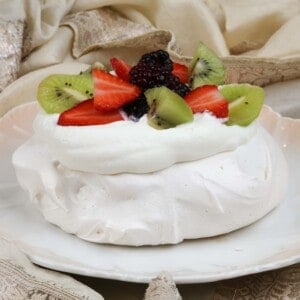
Equipment
Ingredients
- 1 large egg white -room temperature
- ¼ cup sugar
- ¼ teaspoon cornstarch
- ⅛ teaspoon cream of tartar
- ¼ teaspoon vanilla extract
- ⅛ teaspoon lemon juice
For the Whipped Cream
- ¼ cup heavy cream
- 1 teaspoon sugar
- ¼ teaspoon vanilla
Toppings
- fresh berries, sliced kiwi fruit, or your favorite sliced fruits.
Instructions
- Preheat the oven to 225°F (107°C).
- Beat the egg white with an electric hand mixer on high until foamy, about 20 seconds. Pro Tip: Ensure no yolk gets in, as even a small amount can prevent proper whipping.
- Mix the sugar, cornstarch, and cream of tartar in a small bowl.
- Gradually add the sugar mixture to the egg white while beating on medium speed. Increase to high and beat until stiff peaks form and the meringue is thick and glossy, about 10 minutes.
- Briefly mix in the vanilla and lemon juice for 10 seconds.
- Shape the meringue on a parchment-lined baking sheet, creating a slight indent in the center for the whipped cream. Smooth the edges or leave them rustic.
- Bake for 1 hour, then turn off the oven and let it cool inside for another hour without opening the door. Pro Tip: Once cooled, store covered at room temperature for up to 2 days or serve immediately.
Make the Whipped Cream
- Make the whipped cream by beating the heavy cream, sugar, and vanilla on medium speed until soft peaks form. Pro Tip: The cream should thicken, leaving trails. Soft peaks curl down slightly and melt back into the cream.Note: I use 1 teaspoon of sugar in the whipped cream, but you can add another teaspoon for a sweeter taste.
- Spoon the whipped cream over the pavlova.
- Top with fresh fruit or berries and serve.
Notes
- Check the weather. Pavlova is best made on a dry day with low humidity. Moisture in the air can cause it to collapse. Avoid boiling water or cooking steamy foods while making pavlova, as steam adds moisture to the air.
- Read the recipe first. This dessert comes together quickly, so review the full recipe and ingredient notes before starting. Have everything measured and ready.
- Use a room-temperature egg white. It whips faster and creates more volume than a cold one. Take the egg out of the fridge at least 20 minutes before making your pavlova.
- Keep equipment grease-free. Any trace of fat in the mixing bowl or on the beaters can prevent the egg whites from whipping properly.
- Make two small pavlovas. If you prefer, divide the meringue into two circles on the baking sheet instead of making one larger pavlova.
Nutrition
The information shown is an estimate provided by an online nutrition calculator. It should not be considered a substitute for a professional nutritionist’s advice.

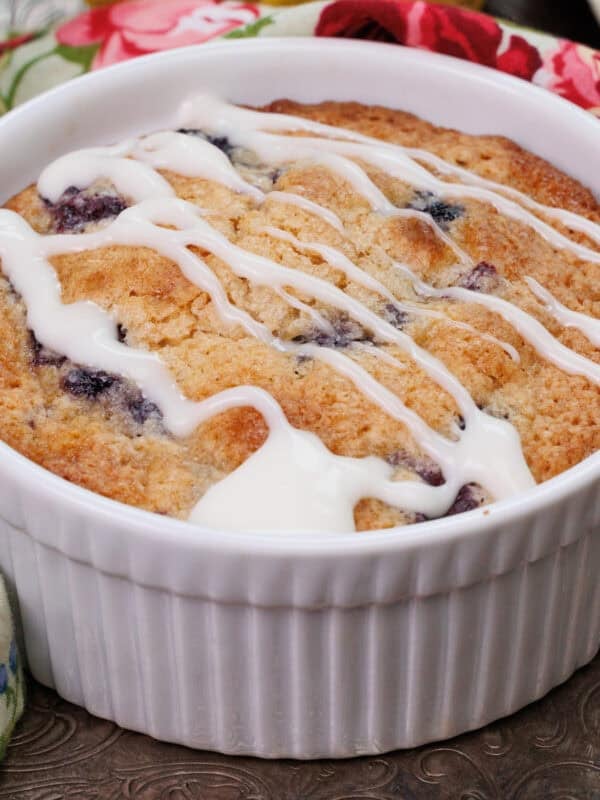
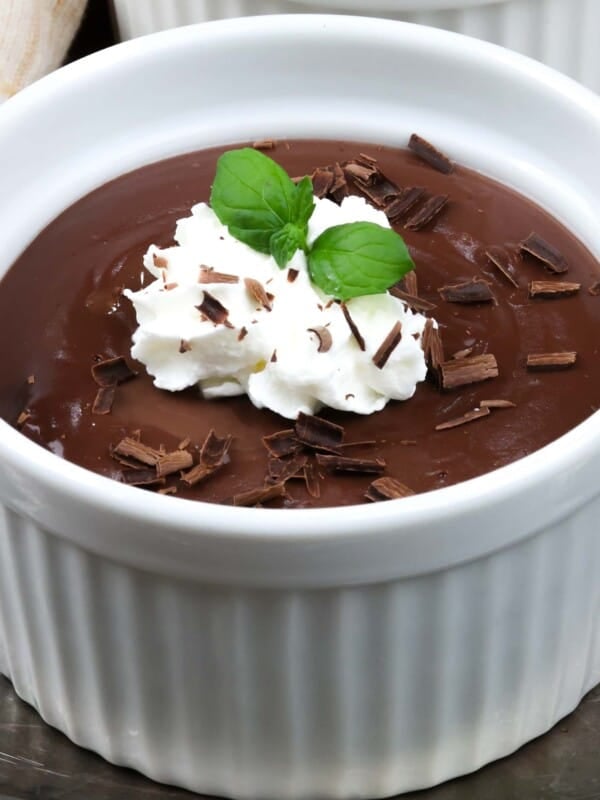
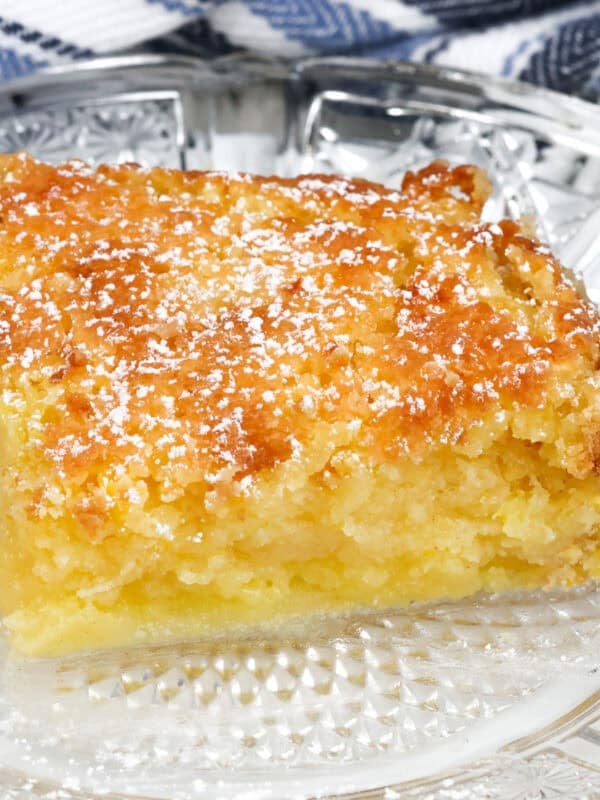

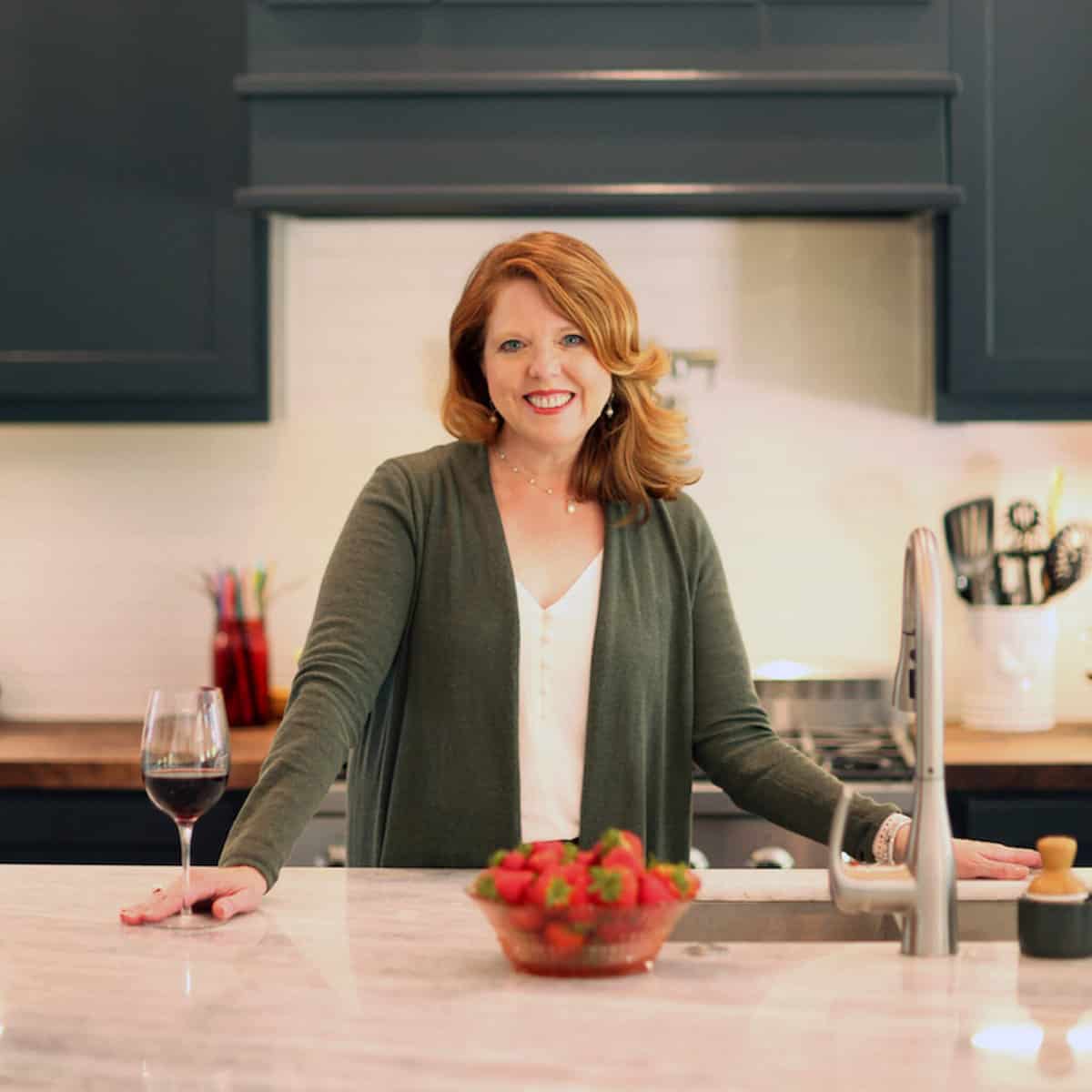
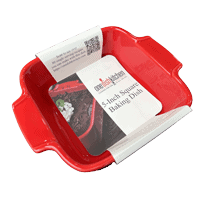








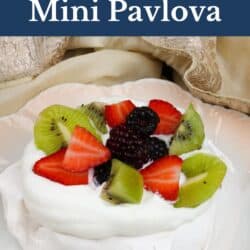
I tried and couldnt even get it to stiff peaks. I followed all the instructions and even searched up what could’ve gone wrong and apparently youre supposed to add the sugar after the soft peak stage. The recipe said before. I literally whipped for an hour and it still didn’t work out and it eventually even got over whipped. Part of it is my fault but part of it is the recipe.
Thanks so much for sharing your feedback. I’m really sorry it didn’t work out for you, pavlovas can definitely be tricky! I’ve tested this recipe many times and the method of adding sugar early has always worked well for me, as well as for many others. That said, meringue can be sensitive to all kinds of variables, like even a trace of yolk in the whites, a greasy bowl, or even humidity in the air. I hope you’ll consider trying it again, I’d love for it to work for you too.
I cannot explain how excited I am to have this option of a pavlova for ONE! There’s just two of us and my hubby isn’t a marshmallow fan. I’m absolutely making this TODAY! Cannot wait to dive into your other recipes. I’m super excited for the small batch options!
I love pavlova and I live alone so this is really great. I look forward to making one for myself soon. I love your website, it is fantastic for single people. Thank you Joanie.
I think I’ll find a bakery that sells Pavlovas instead of baking one, but it does look scrumptious!!!
Made this today – topped with pluots. So Good. I enjoy baking – single serve allows the need without the extra 🙂
Is there anyway, I can make this with frozen berries? (here in the Pacific NW
we have dark berries to die for but rarely find fresh as good)
I also want to make 3 individual ones for a birthday (3 having dinner)
I am certain my
my sister would be delighted at this concept instead of a cake
Thank you so much
Hi Rosalee! What a beautiful birthday dessert! Yes, you can use frozen and thawed berries for the topping.
As a kiwi living on my own, I cant say how delighted I am to be able to indulge myself with a classic dessert and not have to throw half of it out. Thank you Joanie.
Just wondering what the diameter of this so I’ll know how thick it should be. Thanks so much!
Debbie, I would say the diameter is roughly 4 to 5 inches and the pavlova itself is about 1 inch tall with a slight indentation in the center.
Good recipe.
Thank you!